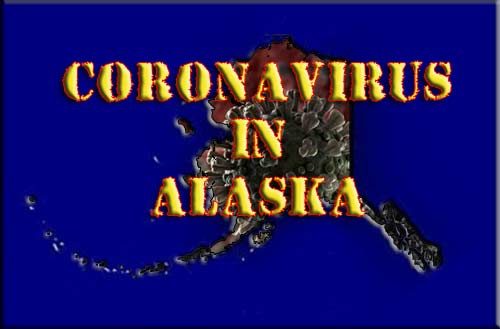ANCHORAGE – Saturday, due to the current surge in COVID-19 cases and a shortage of resources within some hospitals, the Alaska Department of Health and Social Services (DHSS) activated the State’s crisis standards of care document, Patient Care Strategies for Scarce Resource Situations, for 20 Alaska health care facilities. The activation was requested by the State’s Crisis Care Committee for the following health care facilities:
- Alaska Native Medical Center
- Alaska Regional Hospital
- Bartlett Regional Hospital
- Bristol Bay Area Health Corporation/Kanakanak Hospital
- Central Peninsula Hospital
- Cordova Community Medical Center
- Fairbanks Memorial Hospital
- Maniilaq Health Center
- Mat-Su Regional Medical Center
- Norton Sound Health Corporation
- Petersburg Medical Center
- Providence Alaska Medical Center
- Providence Kodiak Island Medical Center
- Providence Seward Medical Center
- Providence Valdez Medical Center
- SEARHC/Mt. Edgecumbe
- South Peninsula Hospital
- Elias Specialty Hospital
- Wrangell Medical Center
- Yukon Kuskokwim Health Corporation
Several of these health care facilities had previously enacted their own crisis standards of care unique to their facility. Today’s action recognizes that Alaska has an interconnected and interdependent health care system, requiring the need for activation of the State’s decision-making framework. That framework includes a progression of conventional, contingency and crisis standards of care identifying strategies to be used depending on the situation and types of resource shortfalls being experienced. This State document supports facilities, their credentialed providers and staff as they make decisions regarding patient care and also provides liability protection as authorized under House Bill 76 and the department’s Public Health Emergency Order. Earlier this month, the department enabled these standards to be accessed via Addendum No. 1 to the Public Health Emergency Order. [content id=”79272″]
“This activation was requested by the Crisis Care Committee so our health care providers could continue to provide the best medical care possible for Alaskans under good faith immunity,” said DHSS Commissioner Adam Crum. “The availability of resources and staff changes daily within these facilities. The State’s Patient Care Strategies for Scarce Resource Situations, which includes decision-making guidance for implementing crisis standards of care, is now available to these facilities should they need them. I want to stress that our health care facilities in Alaska remain open and able to care for patients. Alaskans who need medical care should not delay seeking it, even during these difficult times.”
The decision to activate the State’s guidance for these facilities was based on the recommendation of the State’s Crisis Care Committee, a volunteer committee composed of 15 health care professionals with diverse geographic representation from across the state that includes hospital and Tribal health care representatives, rural and urban clinicians, intensivists, and clinical ethicists. Factors leading to the activation include scarce medical resources within some facilities and limited health care staff as well as the difficulty of transferring patients to other medical facilities due to limited bed availability. Specific challenges for these facilities include but are not limited to:
- Limited renal replacement therapy (a special type of dialysis used during kidney failure) and limited trained staff to use the equipment
- Limited oxygen supplies, associated equipment and mechanical ventilation
- Limited medical staff and the use of non-clinical staff to support clinical care
- Difficulty of transferring patients from rural communities to critical access hospitals and/or tertiary (specialty) hospitals, which puts patients at increased risk for adverse medical consequences or outcomes
“Our work to support Alaska’s health care facilities continues,” added Heidi Hedberg, director of the Division of Public Health. “We are working alongside our health care facilities to provide state and federal resources to support the surge of patients. We are also imploring Alaskans to do their part. Please get vaccinated if you have not done so already, wear a mask when needed and keep your social circles small. Every action you take helps prevent COVID-19 from spreading and protects you, your family, other Alaskans and our health care system. No one wants to use crisis standards of care guidelines.”
Crisis standards of care are peer-reviewed guidelines that may be used during a disaster or public health emergency when there are not enough health care resources to provide the usual standard of care to people who need it. They guide health care providers and systems to triage patients and resources to do the most amount of good for the most people in times of scarce resources. For more information, please read this DHSS FAQ, Crisis Standards of Care & State of Alaska Support to Alaska’s Health Care System and Providers.
Although authority for the state activation belongs to the DHSS commissioner, individual decisions for patients will continue to be made by health care providers and health care facilities using their own internal protocols and the State’s guiding document. Crisis standards of care will remain in effect until there are sufficient resources to provide the usual standard of care to all patients.
For more information:
- DHSS: Patient Care Strategies for Scarce Resource Situations
- Office of Governor Mike Dunleavy Press Release: Hundreds of Health Care Workers Coming to Alaska as State Provides Support to Hospitals and Health Care Providers
- DHSS: Addendum No. 1 to the Public Health Emergency Order
- DHSS: Info Sheet to the Addendum
- DHSS: State of Alaska Actions to Address Hospital Capacity
# # #[content id=”79272″]







